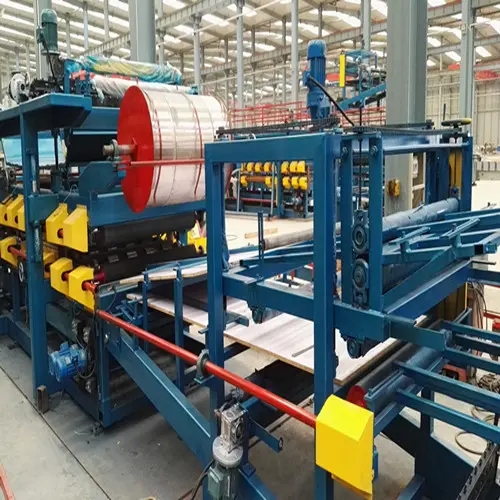
Stud and Track Keel Roll Forming An Overview
Roll forming is a continuous bending process that shapes metal into desired profiles, which are then used in various applications. One of the specialized applications of roll forming is in the production of stud and track systems, commonly used in steel framing for construction projects. This article delves into the intricacies of stud and track keel roll forming, its benefits, and its applications.
Stud and track systems are essential components of light gauge steel framing, widely used in wall systems, ceilings, and floors. The stud serves as the vertical component, while the track acts as the horizontal element that holds the studs in place. These systems are crucial in both residential and commercial construction, providing structural stability and versatility.
The roll forming process for stud and track components begins with a flat strip of steel, which is fed through a series of rollers that progressively shape the metal. The design of the rollers is critical as it dictates the final profile of the stud and track. Typically, the stud has a C-shape, while the track is designed to accommodate the stud securely. The roll forming machine operates continuously, allowing for efficient production rates and reducing material wastage.

One of the primary advantages of stud and track keel roll forming is its ability to produce high volumes of consistent, high-quality products. The automated nature of the process ensures precision in dimensions, reducing the need for costly rework. Moreover, because the components are lightweight yet robust, they are easier to handle and install compared to traditional materials like wood or concrete.
Another significant benefit of using stud and track systems is their inherent resistance to common issues faced in construction, such as termites, rot, and warping. This durability not only enhances the longevity of the building but also contributes to lower maintenance costs over time. Additionally, steel is a recyclable material, making stud and track systems a sustainable choice for environmentally conscious construction practices.
In terms of applications, stud and track systems are versatile and can be adapted for various types of buildings, including residential homes, office spaces, and industrial structures. The flexibility of design allows architects and builders to create innovative solutions that meet specific project requirements.
In conclusion, stud and track keel roll forming is a vital process in modern construction, offering efficiency, quality, and sustainability. As the construction industry continues to evolve, the adoption of such advanced techniques will play a pivotal role in shaping the future of building practices, allowing for faster, more reliable, and environmentally friendly construction methods.